Just like you can’t judge a book by its cover, you can’t trust a search by your top results. But how is that so? It contradicts all we believe to know about search engines, and cracks the inherent trust users put into “Googling it.” The truth is, even the most tech-savvy digital marketers don’t know the exact rhyme and reason behind Google’s search algorithms. So, what do search engine marketers know? It is widely known and confirmed that keywords and a handful of other core factors are being prioritized by crawlers in organic search rankings. We know the golden rule is relevancy, and various content and technical signals determine a relevant match to a user’s keyword search and top-rated results. But recent news has revealed you can’t take everything for face value, as even the tech giant itself is susceptible to hacking campaigns.
The latest trend in malware has been termed SEO poisoning, or “search poisoning”. This attack method relies on optimizing websites using ‘black hat’ SEO techniques to rank higher in Google search results. These ‘black hat’ optimized websites are in fact malicious, but due to a high SERP ranking deceive victims into believing these sites are legitimate and clicked by visitors looking for specific keywords.

SEO for Ransomware
According to the findings of the Menlo Security team, SEO poisoning cases are on the rise. Notorious ransomware groups, SolarMakers and REVil, are thought to be attributed to some recent attacks. Their campaigns used SEO poisoning to serve malicious payloads to their keyword-seeking targets. After optimizing sites with keywords that cover over 2,000 unique search terms, the sites appear top in a user’s search results page (SERP). These sites appear in search results as PDFs, and when visited, prompt a user to download the document.
When a user clicks the download button, they are redirected through a series of websites that ultimately drop a malicious payload. The threat actors use these redirects to prevent their sites from being detected and removed from Google search results for malicious content.
In the two most notable campaigns, Gootloader and SolarMarket, the actors didn’t create their own sites but instead hacked legitimate WordPress sites with strong Google search rankings. How? By abusing an undisclosed flaw in the ‘Formidable Forms’ WordPress plugin, which the hackers used to upload malicious PDFs. B2B websites were the most heavily targeted, as they are known to naturally host a large library of downloadable PDF resources.

So What Does This Mean?
For users, do your due diligence. Not all is as it appears online, even on trusted sites like Google. Exercise caution, keep up with your antivirus programs and monitor for suspicious links or potential phishing scams. A cybersecurity hack could result in breached sensitive data or require a ransomware payout.
For businesses, beware. Hackers have learned targeting high-value companies can yield much higher payouts (millions compared to the measly hundreds in consumer ransoms), especially if there is a high likelihood their attack will affect many users. Maintaining a healthy website entails regularly updating plug-ins, installing preventative security measures, and conducting frequent tests.
Does your website need a check-up? Or perhaps a new fitness regime to keep website health goals on track? Contact Bluetext to learn how our website development, optimization, and maintenance services could cure your security concerns.
In true Google fashion, Google Ads is changing the way you can advertise again. Previously, you were able to create Expanded Text Ads (ETAs), but beginning June 30, 2022, all of your standard search campaign ads will need to include at least one Responsive Search Ad (RSA) per ad group. The good news is this can improve your search campaign’s performance if managed correctly. And at least for now, ETAs are not fully leaving. In fact, Google even recommends having two ETAs along with an RSA for each ad group. Diversifying your ad groups sounds great in theory, so maybe Google is doing digital marketers a favor. Nevertheless, change is change, even in the most advantageous versions. So let’s break down why including RSAs can help your business achieve campaign objectives.
First, What Are RSAs?
RSAs could be considered within the next-generation tech wave of AI marketing, almost like a self-driving car for your search campaigns. Responsive search ads let you create an ad that adapts to show more text—and more relevant messages—to your customers. Enter multiple headlines and descriptions when creating a responsive search ad, and over time, Google Ads will automatically test different combinations and learn which combinations perform best.
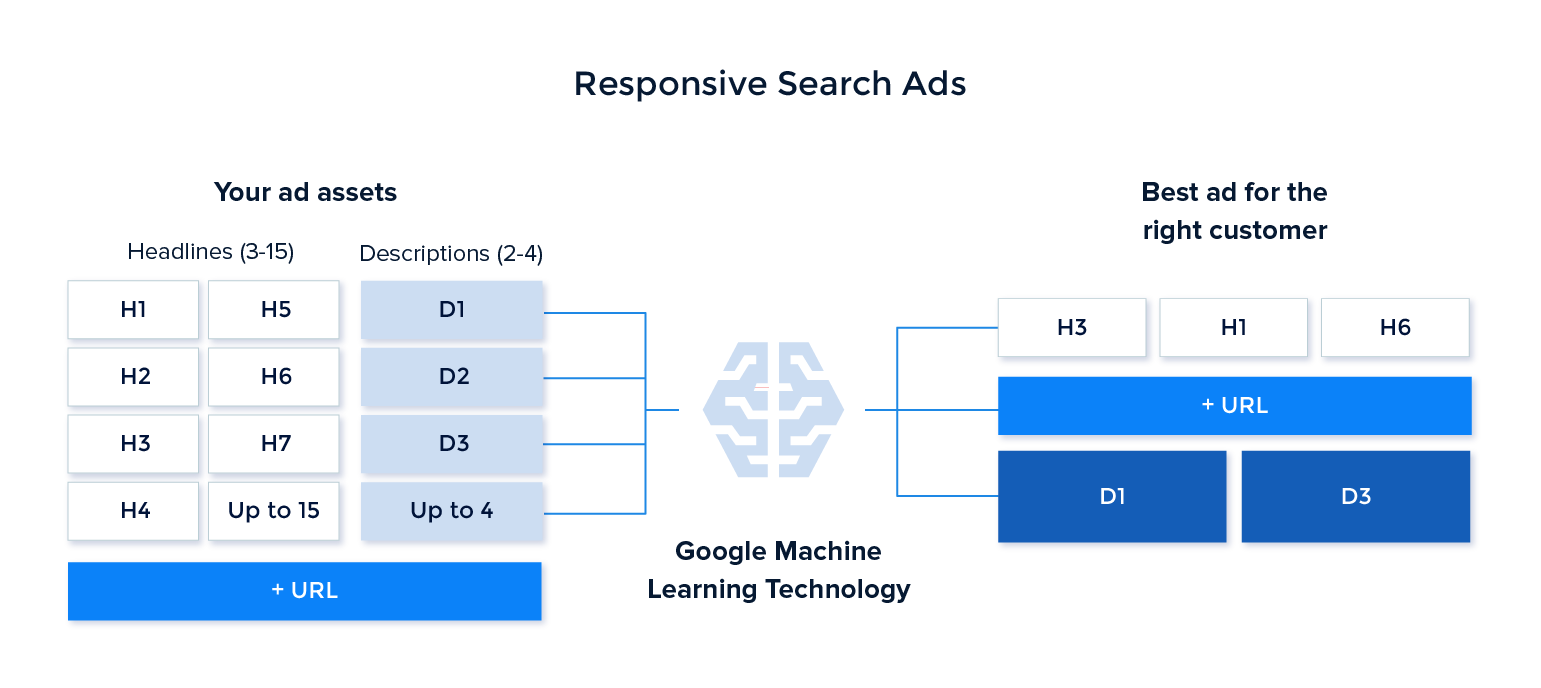
How do RSAs differ from ETAs?
One of the key differences between ETAs and RSAs is that RSAs are more dynamic. Rather than creating multiple ads for different users, now you can create a single RSA with various headlines and descriptions, then Google will automatically tailor the ad to fit the user’s needs. RSAs allow you to set up to 15 different headlines and up to 4 different descriptions. The drawback to this new method is that you can’t preview the exact combination of text users will see, so you need to ensure your headlines and descriptions can all work together. But more on that later!
While ETAs give you more direct control over your ads, they also require you to update them more frequently to remain relevant. RSAs however require fewer updates since they can provide fresh combinations of headlines and descriptions to users on each visit. This ensures your ad copy doesn’t go stale and can match up top-performing headlines to the potential customers. The tradeoff for this benefit is that RSAs typically take longer to set up, as they require more thought initially.
So how can you prepare?
One of the things you can start doing is experimenting with RSAs for testing purposes. Meaning, you should continue creating your ETAs for now, but supplement them with RSAs to get the hang of the upcoming change. This combined approach allows you to experiment with your optimal ad copy while also leveraging Google’s machine learning insights. Beyond that, you can experiment with pinning headlines in your RSAs. This gives you similar control of your ads to ETAs by ensuring specific copy appears in the first, second, or third position of your headlines.
Machine Learning-Based Recommendations
Google’s shift towards RSAs is pushing advertisers to rely on Google’s machine learning algorithm more and more. A benefit of this change is more relevant recommendations for your account’s performance. While these recommendations can help you discover new relevant features and improve your bidding strategy, an experienced digital marketing agency such as Bluetext can help steer your campaign to success.

Ongoing Performance Monitoring and Improvements
While the recommendations page can assist you in finding some trends based on historical data, you’ll still need valuable data to base those decisions on. That’s why any good campaign should utilize ad variants to test different messages. That way your historical data can reflect a range of ad variants and you can determine which combinations work best. This also allows you to determine the best way to tweak each ad for ongoing performance optimization.
When it comes to these ongoing performance-based adjustments, you should do your due diligence in checking the data. But data is data, without proper interpretation of insights, there are no actionable changes to truly optimize your ad spend. That’s where digital marketing expertise can make a difference. Bluetext’s search campaign experts are skilled at sifting through marketing data to identify trends and recommend areas for improvement. Want to learn more about how Bluetext can help your ad campaigns thrive? Get in touch with us here.
We’ve all heard the old adage “the medium is the message” – and that could not be more true in today’s vast media landscape where the majority of users are browsing websites on mobile devices. Knowing that users are visiting your website and often encountering your brand for the first time on a mobile platform, it is essential to thoughtfully design a mobile user experience that takes into consideration both the benefits and limitations of mobile devices as well as known user behaviors.
Mobile web design should not just be a narrowed version of the desktop experience, it should be a responsive design in and of itself that gives way to an intuitive user experience and easy navigation to the information the user is looking for. There are so many variables that can cause a user to leave a website. A slow-loading page or poor content layout can be enough to drive users away – don’t let a lack of forethought when it comes to the mobile user experience be a barrier between your audience and your website. By implementing the following best practices, you will be sure to create the best mobile experience for your users:
Ease of Click is Key

You should always keep in mind what we know about all users visiting your website – every action you ask them to take should be as easy and frictionless as possible. Before even considering the content that will go on a page, you need to consider where on page it will be most accessible. In 2011, Steven Hoober and Eric Berkman published a study called “Designing Mobile Interfaces” in which they coined the term “thumb zone.” This refers to the areas on mobile screens that are most easily reached by the users’ thumbs and therefore where all important clickable items should be placed. Placing important buttons and links in difficult-to-reach areas on screen can add barriers to content and therefore detract from the overall user experience.
Intuitive Navigation
Whether a user knows exactly what they’re looking for or they are purely just browsing on your site, the path to information should always be clear and natural. Creating the best navigation for your site requires thoughtfulness of content and consideration of your audience and the way they are used to maneuvering through a website. The navigation should make sense for the content you have to offer while also aligning with the organizational structure that your users are familiar with. There are many correct ways to layout the navigation of your website, you just need to find one that is the best fit for you and your audience. Employing intuitive navigation on your website is particularly important on mobile platforms because eliminating clicks to content while also having a well-organized site structure can assuage user frustration, encouraging them to stay on your site longer and to visit more pages. Solutions like hamburger menus help organize the menu in a way that the user isn’t overwhelmed by the menu items all at once when first arriving on the page while also mimicking the structure of the desktop site.
Cross-Device Consistency
While the mobile experience of a website should not just be a minified version of the desktop interface, keeping consistent UX design across desktop, tablet and mobile devices should always be a priority when creating your website. Responsive design across the board is crucial when trying to keep the user from disengaging from your site. Any inconsistency that arises when switching from one device to another can create confusion for the user and create the perfect opportunity for them to leave your website. Once again, it always comes back to making everything seamless and easy for your user. The mobile web design should be a full experience in and of itself that considers the intricacies of mobile user behavior while also mirroring the overall UX of the desktop interface. It is a delicate balance but is very worth it when done right.
Prioritization and Breakdown of Content
Simply due to the nature of mobile devices, there simply isn’t much space to fit content in one viewport. This means that in order to encourage your audience to 1) consume the content you write and 2) take away the most important points, you have to visually break up content to make it digestible while also pulling out the highlights as visually engaging elements on the page. Drawing users to your website is a challenge in and of itself – this is only compounded by the challenge of capturing enough of their attention so that they read a significant amount of content while on your site. The reality is you have a very short window to grab their attention and once you have it, concisely driving home the main takeaways is crucial. On mobile, in particular, breaking up content into chunks rather than overwhelming the user with massive blocks of text is a good way to make it all seem more approachable especially when you are trying to fit content into such a small screen. Highlighting specific points using statistics and images in a visually interesting way is a great way to also hold user attention.
Conclusion
Users have shown over a number of years now that the age of mobile device browsing is here to stay and if you choose to ignore it, you will get left behind. When designing for mobile devices, there is so much to be gained by considering what we know about users and the way they physically interact with their devices, and the way they consume content. Mobile web design principles center around the idea that users should always be presented with the path of least resistance when it comes to finding the information they need on your website as well as actually clicking the button to get there.
If your website needs a mobile makeover, contact Bluetext to learn about our website user experience design services.
Scroll-based animation offers all the benefits of on-page animation and more. Not only do pages with scroll-based animation engage users more effectively, but they can also tell more complex stories, improve page load time, and expand the capabilities of your brand identity.
Some stories are best told visually, and scroll-based animation is an effective way to make complex stories simple and elegant. Designers can use animation to guide users as they scroll, catching their eye at exactly the right time and place. Apple incorporates subtle animations into its product pages to drive user focus toward key information they want to highlight.
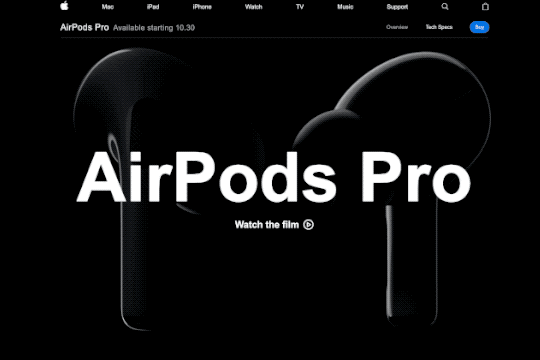
Scroll-based animation can offload elements beneath the virtual “fold” from the initial loading process, decreasing overall load time. Elements above the fold are prioritized in the initial load, saving time on down-page items that are animated to appear as the user scrolls down.
Implementing scroll-based animation provides the opportunity to add animated elements to your brand. Whether they’re completely new, or existing pieces that have been updated with motion, animated elements can help bring your brand to life. Elements like a scroll-based footer or call-to-action can be used across a website to consistently call attention to key information about your brand.
Key Tips for Scroll-Based Animation
Getting started with scroll-based animation can be tricky, so here are a few pointers to keep in mind as you go.
- Timing is everything. The flow of the animations as a user scrolls down the page is key to maintaining their interest. As a user moves down the page, elements should naturally animate or appear, so there are no gaps in the experience. A simple, well-timed scroll-based animation is always better than a complex but awkward one.
- Added effects should emphasize key information, not detract from it. Keep in mind that the whole point of on-page animation is to make it easier for users to navigate your site and find what they’re looking for. Be sure that any effects or animations make their experience easier, not more difficult.
- Less is more. When in doubt, simplify. Avoid cluttering your site by animating every element on a page or by introducing particularly drawn-out animations for no reason. As a rule of thumb, smaller elements should have shorter animation cycles, and each animation should have a purpose in guiding the user experience.
Looking for inspiration?
Clarabridge’s animated homepage brings the brand to life and elevates the user experience. On-page effects guide the user through the homepage, emphasizing the strength and ease of Clarabridge’s solutions. Click here to read our case study on this project.
HuffPost’s interactive article, Chef Jose Andreas Embraces the Chaos, is an example of “scrollytelling,” which uses scroll-based animation to enhance a written story. Hand-drawn visuals appear as the reader scrolls through the story, adding a playful, personal feeling to the page.
For Calling All Optimists, Bluetext incorporated subtle scroll-based animations throughout the site to draw attention to key information or calls-to-action. Along with the brand’s playful shapes and colors, these animations reinforce the positive, dynamic qualities of the site. Click here to read our Calling All Optimists case study.
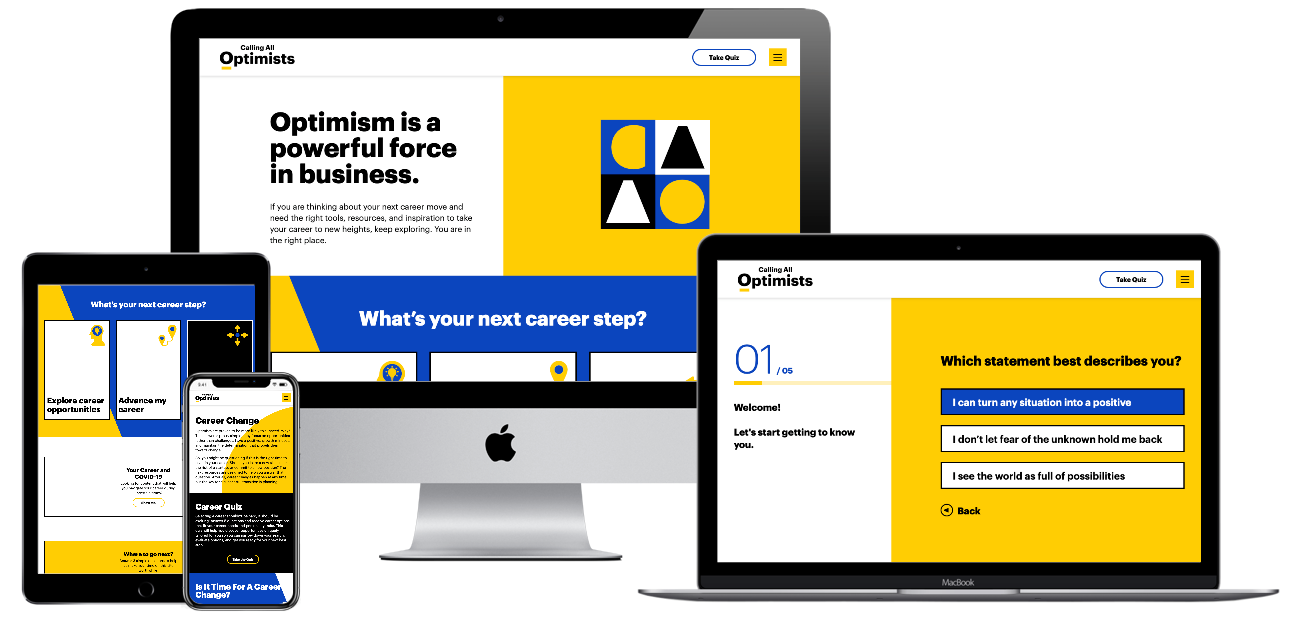
Ready to see how scroll-based animation can enhance your site? Contact Bluetext to learn about our motion design and interactive UX services.
Google Search is known for consistent updates and feature releases but is often done in a beta-testing form. What does this mean exactly? Essentially, these new features will undergo A/B testing where only a small subset of users will experience this feature, while the majority of the user base will notice no change to the user experience.
Google’s newest feature to be unleashed for user evaluation is featured snippets. This updated design interface will display across the full width of a user’s viewport. While traditionally search results span across only two-thirds of the screen, cutting off at the end of the Search bar, this format frees right screen real estate for Google business, location results, and advertisements.
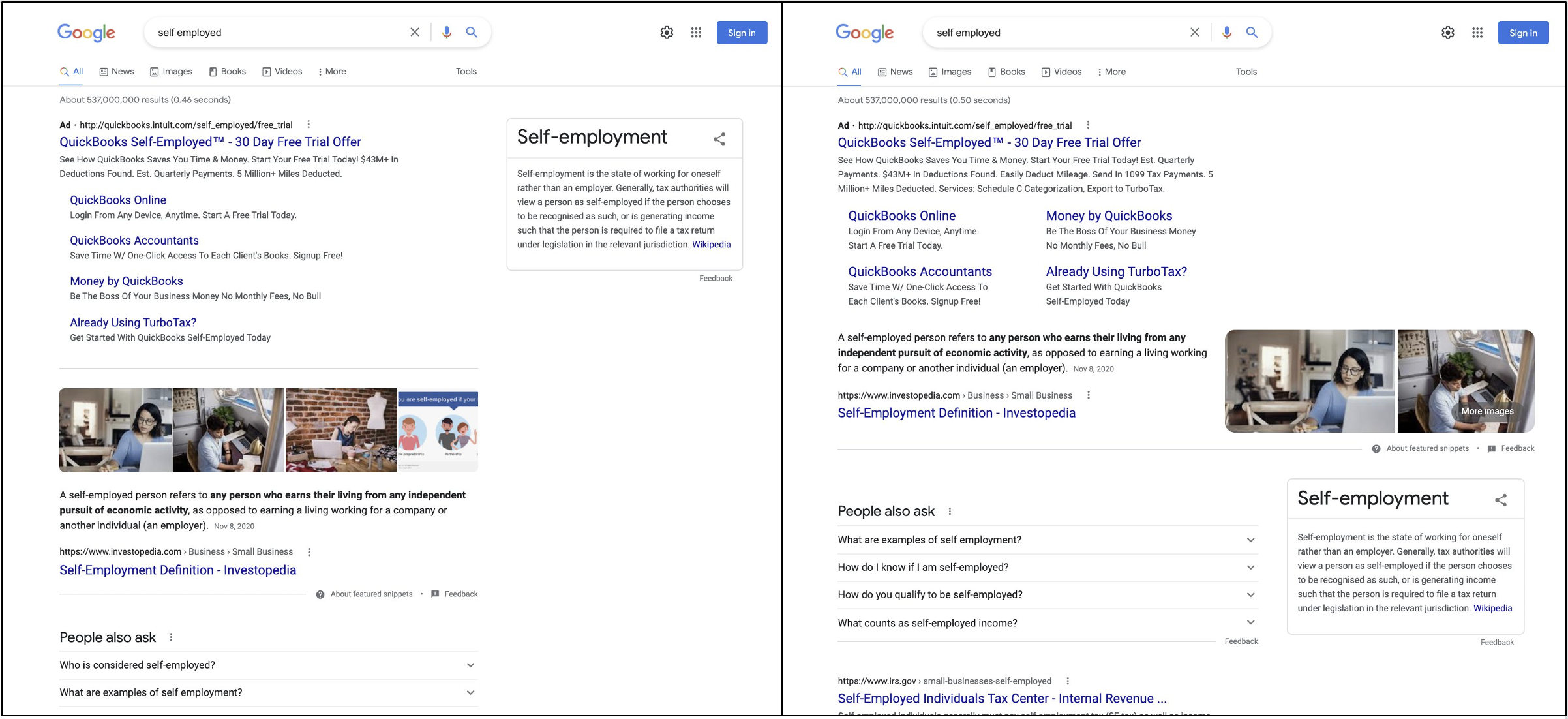
Featured Snippet: Current vs. Beta
How Do I Get A Featured Snippet?
Unfortunately, featured snippets can’t be acquired by any amount of search engine marketing budget. Featured snippets are based on Google search results or SERP. Google’s automated systems determine whether a page would make a good featured snippet to highlight for a specific search request. A featured snippet will display the result description above the webpage link, rather than below like all other results. Google crawlers will implement this display format if they believe the page will help users easily discover what they’re seeking, either from the description about the page or by full webpage content when they click on the link. These features are especially prominent on mobile or voice searches, both methods rapidly growing in popularity.
So, What’s the Verdict?
The reviews are mixed on these new full-width features. Below, Bluetext has explored the pros and cons users have pointed out.
Cons:
Some users were off-put by the ‘massive’ span of text, feeling that this layout overtakes the screen and seems off balance with all other content aligned to crop at the search bar. Naturally, any change in the layout we have all grown accustomed to will seem awkward at first. However, the wider format is encroaching on the right panel where the Google My Business and local listing results typically display. This could consequently push key information (Google images, address, hours, reviews, contact links, and more) that users expect and inevitably demand when conducting a search.
Pros:
As digital marketers, Bluetext pointed out some advantages of the ‘massive’ display. First, the featured object is much more prominent and attention-grabbing. By definition, featured snippets take a differentiated view (description displaying above link rather than below), making it a high achievement for organic search. The wider, full-screen takeover intensifies the distinction from other websites and increases the likelihood of a user clicking on a page.
It’s unknown if and when these featured snippet updates will be unveiled to the Google user base as a whole, but take notice next time you conduct a search to see if you see a change.
If you’re ready to ramp up your organic search strategy in hopes of becoming a featured snippet, contact Bluetext to see how we may be able to uplevel your strategy.
The needs of a modern consumer are not static; they are constantly moving and advancing, shifting and changing. Customers adopt and discard products at breakneck speeds, seeking new opportunities for enjoyment and discarding them at the first sign of trouble. For a product to remain relevant in the eyes of today’s consumers, it must be able to not only meet their present needs but evolve alongside them to seamlessly adapt to future needs. Effective product management requires two critical steps; first, a deep understanding of how consumers use a product, secondly the ability to leverage that knowledge into actionable improvements. To do so, your business must understand product intelligence and its essential role in an impactful relationship with your customers.
What Is Product Intelligence?
Product intelligence refers to the use of software to collect and analyze data about a product’s performance with users. These systems gather and interpret information about how users’ interaction delivers critical insights on strengths and opportunities for improvement. Product intelligence also takes into account external factors that influence the customer relationship. Shipping, marketing, customer support, and countless other service touchpoints all influence consumer perception and ultimately the experience of your offerings. Product intelligence software helps aggregate these factors to evaluate the performance of your product holistically.

The ultimate goal is to create a positive feedback loop that enables product teams to iterate and innovate with greater speed and higher accuracy. By leveraging critical insights about the customer experience, product management teams can implement improvements to engage, convert, and retain users more effectively.
Product Intelligence Best Practices
- Understand the Customer Journey – While website interactions and app behavior are important, you need to include insights from marketing campaigns, ad spend, and other touchpoints to drive a deeper and more impactful understanding of your customers. Analytics, behavioral targeting, and customer data management cannot remain isolated from each other when optimizing product experiences.
- Collaboration Cannot Be an Afterthought – Services and integrations don’t get you a great product experience; teams do. For product intelligence to make a real impact on your business, you need to support efficient collaboration among product teams. That means being able to keep pace with rapid question-asking, in-depth exploration, agile decision-making, and generally enabling the most frictionless product development process possible.
- Assess Your Competitive Landscape – Your product offerings don’t exist in a bubble, and understanding the potential interactions consumers could have with the competition helps guide you towards truly differentiable improvements. You should strive to know your competitor’s products, strategies, and marketing tactics just as well as you know your own.
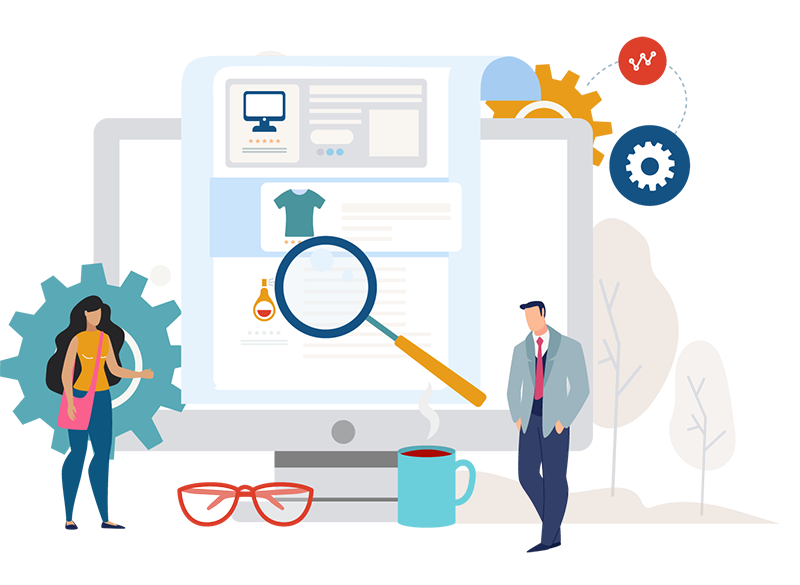
Why Is Product Intelligence Important?
Consumer preferences can change in an instant, and companies that can’t keep pace are destined to fail. Product intelligence ensures that your business will never be left behind by shining a light on the key factors that influence whether or not a consumer buys and continues using your products. Whether it’s through illustrating conversion paths, documenting user interactions, or detailing which marketing campaigns attract new visitors, the product intelligence process provides a holistic view of how your product adds value to people’s lives.
Navigating the high-stakes challenge of effective product marketing can seem like a daunting task. That’s where Bluetext can support. From omnichannel media campaigns to product videos & landing pages, Bluetext’s digital marketing experience can ensure customers old and new take notice of your company.
Video marketing can be a vital tool when it comes to leveling up your marketing program. Video, as a medium, is an exceptional opportunity to tell your brand’s story and mission using dramatic visuals, voiceover, and music. Video allows you to inject emotion and feeling into your content, something that written mediums like blog posts and product pages just can’t compete with. As some may say, the medium is the message. To humanize your brand and create a memorable connection, audiovisual content can build that bridge. Additionally, the ease with which you can upload your video content to a variety of social media platforms allows you to share your story with as many potential customers and reach as wide an audience as possible.
Below, we dive deep into the five reasons you need to use video in your marketing strategy and why partnering with a video design and production firm like Bluetext is the right choice for you.
1. Authentic Video Builds Trust
Perhaps most importantly, video content helps build trust between you and the prospective buyer. Trust is the foundation that drives conversions and overall sales. 57% of consumers say that videos give them more confidence to purchase online. With a great voiceover and a moving music track, videos can provoke a very emotive, and therefore, human response, more impactful than any generic landing page. Having your team on camera explaining your product or service is also a great way to provide prospective customers with a sense of your company culture and why they should work with you. Additionally, video content filmed and edited the right way evokes authenticity and transparency, both key points when aiming to build trust.
Through our work with Invictus, we produced a video around the story of their unique, military family-oriented mission that resonated with their prospective customers.
2. Explain Difficult Concepts With Ease
We live in a fast-paced visual-based world, where users are less likely to read through a product description and more likely to prefer an infographic or video that explains the solution succinctly. Technology has made us all accustomed to immediate satisfaction in finding the answers we seek. And if users don’t find the information they’re looking for, they lose interest or look elsewhere. Video content reduces the overall effort it takes to learn something new, especially when it may be a difficult concept to understand. If you’re launching a new product or service, explaining its features and advantages will be easier through video than a product landing page. The way the human brain processes information varies by individual, some are more visual learners, some auditory, and even some kinetic. If you don’t have the words to explain your product, the use of animation can help bring any concept to life. An audiovisual medium allows you to effectively reach a wider audience. The quicker someone can understand your product, the quicker the conversion from prospect to a customer will be.
Through our work with IoT cybersecurity company, Phosphorus, we told the story of their mission and the power of their groundbreaking platform.
3. Google Loves Video Content
There are a variety of reasons Google loves video. Perhaps most importantly, Google places great value in the length of time a user spends on your webpage. If your video content is enticing enough for the user to watch it all the way through, they’re more likely to spend more time watching a video on your site than reading through a lengthy landing page. Additionally, as we know, including keywords in your written content is important in any SEO strategy and helps improve your search rankings. Using the latest Video Intelligence API, Google can catalog the relevant keywords in your videos and increase your ranking in search engine results. Relevant keywords in your video and written content packs the maximum SEO punch into your webpage. Another great reason video content is a great SEO value is as video content can be adjusted to multiple screen sizes, Google ranks this content very high in search results.
4. Mobile Users Benefit
In the world we live in, everyone is glued to their smartphones throughout the day, watching, liking, and sharing content. According to a recent study, 90% of users actually watch videos on their smartphones rather than on computers or televisions. The ready availability of so much video content on smartphones is driving this statistic and will only grow as more and more content is produced. So what does this mean for you? Increasing the amount of video you put into the market will only increase the engagement with your content from prospective customers. Well-produced, informative content will be more likely shared and will lead to increased sales.

5. The Competitive Advantage
Stay one step ahead of the competition by producing video content. A lot of companies are still of the mindset that video content is way too expensive; and sure, some very well-produced content can get expensive when you’re factoring in custom shoots, actors, and multiple 8K cameras. That being said, video content doesn’t have to be expensive. With the right story and a camera as readily available as the one on your smartphone, you can create perfect video content that will resonate with your target audience and lead to many conversions. Being smart with your resources (financial & human) can result in an impressive video that no one would know was built on a budget.
Videos can play a massive role at every stage of the marketing funnel. That being said, creating high-performing video content takes time and effort. Ensure you have the right video content strategy from the get-go and that you maximize authenticity, creativity, and uniqueness. Need support putting together your video content strategy? Contact Bluetext today.
1,300 hours – that’s how long the average American spent on social media in the past year. People are on social media all day every day, with an average daily usage of about 145 minutes. Therefore, it is no surprise that social media has a large influence on us and the decisions we make in both our personal and professional lives. Today, social media is so prevalent that from a business standpoint, it would be a mistake to not take advantage of the medium.
Social media is a highly cost-effective way to market your brand and yield direct benefits. Social media is great for engaging with customers, keeping tabs on competitors, and developing a strong brand presence. Through social channels, you can heighten your brand’s awareness by cultivating a brand personality and quickly reaching not only existing customers but also prospective customers. Additionally, social media analytics, such as click-through rates, are able to give you timely feedback on what strategies work best to satisfy your intended audience. While it is important for your business to have a strong social media presence, you must also be careful to not overextend your social media program. Some businesses make the mistake of trying to maintain a presence on too many social media networks. Instead, it is best to focus on the few networks that will benefit your business the most.
3 Tips for Determining Which Social Media Networks are Worthwhile
1. Know Your Audience
It is crucial to know who your target market is and what social platforms they prefer. Ask yourself – what demographic is my target audience? Different social media channels appeal to different age groups, therefore it is important to identify what age group your target market falls under. For instance, TikTok has a younger audience with 60% of users being under 25 years old; whereas Facebook draws in a more mature audience, with most of its users being between 25 and 44 years of age. Therefore, if you are specifically targeting Generation Z, Facebook may not be the best route to take. Instead, your efforts should be on networks that draw in more youngsters, such as Snapchat or TikTok.
On another note, Facebook offers the largest audience with 2.7 billion active monthly users. The app has great features that allow you to customize your social media marketing and better optimize your corporate social presence. You can even go as far as creating a business account, making use of advertising tools and analytics offered. However, depending on the niche audiences you may be trying to reach, it is important to understand the pros and cons of Facebook relative to, say Instagram, where visuals are a key focus and artistic niches are known to excel.

2. Think About Engagement
How do you want to engage with your audience? Each social media network offers different mechanisms to interact with users. Twitter is the best for directly engaging with customers. With Twitter, you can provide short updates about your business and interact directly through hashtags, mentioning users, liking posts, retweeting, etc. The fast-food chain, Wendy’s, for example, has had success using Twitter to create a unique brand voice through their witty interactions with customers. In contrast, YouTube is a strong option for driving traffic onto other web pages. Through analytics, YouTube has proved to increase website traffic, in which users will view an ad/video on YouTube and then proceed to click on the link to your website homepage.
It is also important to consider how your customers interact with technology. Are they heavy smartphone users? If so, Instagram might be the best application, given that it is pretty much a solely mobile app with 1 billion active users. Channels like LinkedIn are optimal for those whose customers are heavy desktop users.
Next, it is important to find the right amount of engagement with your customers. You do not want to be too active that you are annoying users, but then also not active enough that you don’t stay relevant. To combat this problem, it is best to have a posting schedule to maintain the right balance. The goal is to stay relevant in the minds of your customers, without irritating them to the point of losing followers. Also, engagement isn’t built on one-way communications; you must offer users an opportunity to participate in the conversation via thought-provoking questions or even surveys.
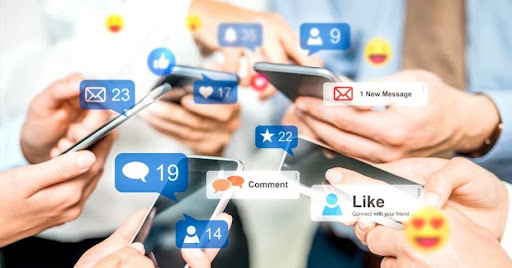
3. Consider What You Are Selling
Of course, your social media strategy factors in what you are selling and who you are selling to. If you are selling a product, then Instagram might be a better choice given its heavy emphasis on visuals. However, if you are selling a service then Twitter might be the better application to use, where the reliance is on words rather than pictures. On the other hand, Pinterest is great for small and niche businesses where you can market directly on the site. LinkedIn is great for B2B firms that are trying to reach business decision-makers who may not be as active or reachable on more consumer-focused social platforms. With LinkedIn, you can promote your business all while positioning yourself as an industry leader and recruiting top talent. Even more so, you can stand out from competitors through thought leadership pieces published on LinkedIn. Blog posts covering how your products/services related to issues pertinent in the world can put your business at the forefront.
In each avenue, social media provides an opportunity for businesses to control the narrative. You are able to pick out what content you want to display and dictate the kind of engagements you have with customers. It is great for reputation management, raising brand awareness, and establishing yourself as an industry leader. Using social media in the right way has the power to transform your business, making your marketing efforts worthwhile. Without a solid social media presence, your business and brand may be absent from key stages of the buyer’s journey or simply missing opportunities to extend overall brand awareness.
Choosing the right social media network to promote your business is crucial for success. Contact Bluetext if you are interested in perfecting your social media presence.
In our modern world, nearly all marketing campaigns integrate some level of digital communication to broaden their reach across their target market. But technology is changing so fast that it can be difficult to keep up with the latest and greatest. And let’s face it, trends have an expiration date. So how do marketers know what digital assets will be the most effective for their campaigns and how do they know what will stand the test of time? Let’s take a look at some digital marketing trends with timeless potential:
1. Quality UX
With more and more digital users every year, it is more important now than ever to make your presence known in the digital sphere. Though, checking off the box for “having a website” doesn’t mean that you can sit on it and let it be. It is important to ensure that your website continuously provides a quality user experience for your end-users to keep them coming back and that it appears modern and relevant to new users.
Whether you are looking to update the look and feel of your website every two or three years, or keep your content strategy up-to-date every few months, it is important to connect with a digital marketing agency, like Bluetext, who can work with you to create a well-informed and exciting new website plan. Digital marketers can work with you to keep your thought leadership up to date, create a new digital brand presence, and develop a smart, sustainable navigation strategy to ensure that your users are able to find what they are looking for on your website. User experience is a broad discipline, with many proven principles that should lay the foundation of every unique design. Quality, well-informed UX will help drive leads, make conversions, and ultimately boost revenue for your business.
2. Virtual Events
We know that the coronavirus pandemic led to a hunkered-down workforce, many working from the confines of their makeshift home offices and connecting with coworkers and clients virtually. Large-scale events were unimaginable and virtual events quickly took their place.
Virtual events are exactly what they sound like ― virtual. This means that attendees don’t need to travel to attend a virtual event as they can enjoy them from the comfort of their own homes. No venue means no geographical constraints and the elimination of travel expenses. Attendees can join from all across the country, and all around the globe without costing their companies a dime.
Virtual events also allow companies to shift their budget away from venue fees and reallocate it toward production costs for their event. High-quality production captures and sustains attendee attention. If your event is lacking in production value, your attendees will be more inclined to spend time on their email instead of participating and actively listening to your hosts and guests.
See how SonicWall successfully garnered a 135% increase in attendance over their previous high-mark partner event. The high-quality production of pre-recorded videos, a custom website with a quasi-live experience, and motion graphics all worked together to untie attendees in a shared interest no matter their physical location.
 3. Augmented Reality
3. Augmented Reality
For a few years now, brands have been experimenting with augmented reality to help place their products directly in front of their potential customers. For example, Wayfair and other furniture companies have an augmented reality feature that places a new piece of furniture directly in your space, allowing you to see how it would fit before making the purchase. Warby Parker leverages augmented reality to show consumers how a new pair of glasses may look without going into the store to try them on or waiting for their at-home try-on box to arrive.
Augmented reality truly allows brands to revolutionize the way consumers interact with their brands, and ultimately their products. And if you’re thinking, ‘that’s neat, but only for flashy consumer brands’ you might want to think again. B2B companies are adopting and innovating on the trend to make this technology applicable to their offerings. Because, why let consumer brands have all the fun?
Bluetext worked with AppGate to provide an immersive augmented reality experience at RSA® Conference 2020, the world’s leading information security conference in San Francisco. Bluetext conceptualized, designed, developed, advertised, and coordinated the ground-breaking Kill Your VPN campaign and augmented reality booth experience to help AppGate stand apart from the 658 other exhibitors in 2020.
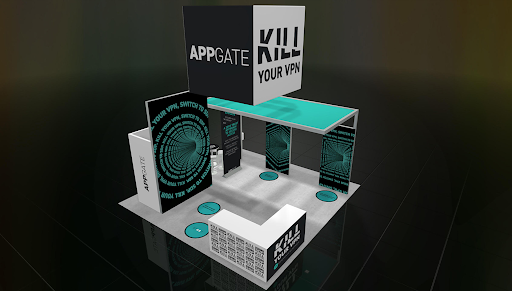
4. Content from Micro-influencers
The influencer marketing industry was worth $8 billion in 2019, and it is estimated to grow to $15 billion over the next two years. But according to Kali Ridley, a marketer on Google’s Brand Studio team, the future lies not with megastars and their millions of followers; it’s with micro-influencers.
Micro-influencers are those with smaller followings, somewhere between 1,000 and 10,000 followers, who are able to form a community within their reach and share messages that will resonate with their fans. More and more, marketers are discovering relatability outshines star power. Relatability feeds directly into trust, therefore, creating a much stronger argument for your product or service.
LinkedIn has undoubtedly made changes to its platforms that enable these micro-influencers to make a further impact. The new “Creator Mode” for LinkedIn allows users to pin specific hashtags to the top of their profile to signify the themes they frequently post about. With creator mode enabled, the presentation of profiles is altered to emphasize the hashtags directly under job titles. Additionally, users can “Follow” these influencers rather than adding them to their personal networks. Now instead of feeling uneasy sending network invitations to a complete stranger, users can follow their favorite thought leaders just as easily as on other social networks.
These small changes in the social media platforms signal that micro-influencer marketing strategies are worth the investment and aren’t going anywhere anytime soon.
If you want your brand to stand out and succeed today, and tomorrow, consider getting in on any of these trends. Each of the four above have a promising future of long-term success. As a digital marketing agency, Bluetext expects these trends to be adopted by many companies over the coming years, and only improve with iterations on previous success. Contact Bluetext today if you’re interested in a future-focused marketing strategy.
Last week the goliath of technology conferences held in the U.S., CES, announced that its January 2022 event will require vaccination proof for in-person attendees. The motivation for the Consumer Technology Association, the show’s organizer, to resume a face-to-face component is strong: exhibitors recognize that generating enthusiasm for new consumer products and technologies through virtually is not nearly as powerful as live demonstrations.
Few in the tech marcomms space have endured a more challenging professional pivot over the past 18 months than those responsible for conference and event strategy and execution – whether it is determining what kind of investments should be made in industry events as well as how to manage their own annual user conferences and smaller events so critical to cultivating customer, prospect and partner relationships.
Pre-pandemic, there was of course no need to make decisions on whether to hold in-person, virtual, or hybrid events — often several months in advance of the event date itself. And through the first 15 months of the pandemic, COVID-19 in effect made the decision for marcomms and event decision-makers as everything shifted to virtual. This was no easy feat but at least the decision was.

The emergence of the Delta variant, right as tech companies were resuming planning for in-person events, exponentially complicates the decision-making process for the 2021-2022 tech conference strategy. While CES is planning in-person for vaccinated attendees, plans for other events run the gamut. As this Marketwatch article notes, tech companies with large user and developer events are re-assessing given Delta. Salesforce.com’s CRM Dreamforce is still planning for an “in-person experience” for the Fall event, but so many others have already reverted back to virtual or hybrid experiences with a limited in-person component.
As you evaluate your 2021-2022 tech conference and event strategy in light of the Delta variant and other unpredictable developments we should all expect in the months ahead, keep the following strategies in mind:
Look at the event track record
Tech conference organizers that have already executed a virtual event last year during the pandemic offer a track record that can be analyzed when it comes to attendance, engagement, and results. The Marketwatch article raised the valuable point that what virtual events lack in intimacy they make up for in some cases with larger attendance, citing feedback from Juniper Networks that attendance for its virtual Global Summit held in April was more than 2x in-person attendance for recent and similar events. It is of course easier and more cost-effective to hop into a live panel discussion on your laptop at home than it is to fly halfway across the country to attend in-person.
But for every Juniper, there is a Mobile World Congress, which forecast a significant in-person attendance drop for its hybrid 2021 Barcelona event, where the 50,000 in-person attendees expected to attend was half the number compared to its “normal” pre-pandemic numbers.
The more information you have from organizations that have already executed events during the pandemic, the less guesstimating you have to do when it comes to the right investment level for attending, speaking, sponsoring, exhibiting, or skipping altogether.
Track records matter because, with conference and event investments, you can’t just assume that all of the money will be recouped if the in-person event is canceled. There can be a difference between an organizer canceling of its own volition, and an organizer canceling because it is subject to city or state directives that are issued prior to the event. The more confidence you can have in the event organizer, the lower the risk of a negative financial and business outcome.
Size matters
If the pandemic has communicated anything to marcomms professionals it is that bigger isn’t necessarily better. Most attendees are going to baby step back to live events, so going from working from home to a crowded pavilion with 100,000 of your closest friends may be a bridge too far.
Dialing it down from potential ‘super-spreader’ to ‘super-intimate’ events that still allow for facetime but in a more controlled environment with modest numbers of people can support corporate and sales objectives. If you are a tech company evaluating what in-person events to attend, don’t discount these smaller events and if you are an event organizer, converting a large annual event into, for example, quarterly smaller regional events can pay off.

The key for user events is data. You can’t just guess how attendees might act when presented with options between in-person, hybrid, or virtual, or what size of in-person event they might be comfortable with. Survey, survey, and then survey again. External third-party data has value, but you know your customers best and keeping your finger on the pulse of their event and travel preferences is critical.
In its latest PULSE Survey, Northstar Meetings Group found that two-thirds of the 826 respondents will hold their next in-person event in Q3 or Q4 of this year – with half of them requiring attendees to wear masks indoors and 28 percent requiring proof of Covid-19 vaccination. But the survey also reinforces the need for conference organizers and meeting planners to be nimble and resilient in the face of constantly evolving federal, state, and local policies.
Re-imagine your traditional event approach
Pre-pandemic tech conferences and events were far from perfect, which helps explain why many have seen value in the shift – as temporary as it might be – to virtual and hybrid events. Marcomm and conference decision-makers should use the challenging environment as an opportunity to re-imagine traditional approaches.
Virtual and hybrid events unlock new content and access opportunities, new ways to engage with and receive feedback from attendees in real-time to drive experiences not possible with in-person events where individuals are scattered and engagement is harder to measure. While larger tech conferences made great strides in trying to make their events “smaller” when it came to networking rather than releasing thousands of people into venues to try and find each other, the results were imperfect.
Each event model comes with its own challenge. User conference organizers know that while virtual events may be easier for customers to join, they are also easier for them to blow off because it doesn’t require the same level of travel, financial, and planning commitment. Hybrid events create challenges for tech brands unsure of which path provides the better value for lead generation, networking, sponsorships, speaking, and exhibiting. And for all of these models, trying to figure out whether it still makes sense to shell out $20,000 for a sponsored virtual speaking slot in lieu of being on the big stage is no easy task.
When it comes to working with B2B tech PR, B2C tech PR, and B2G tech PR firms, Bluetext has been helping clients navigate tech conference strategy for industry events as well as client user conferences. If you are looking for the right partner to maximize your tech conference investments in the months ahead, contact Bluetext to learn how we can help.
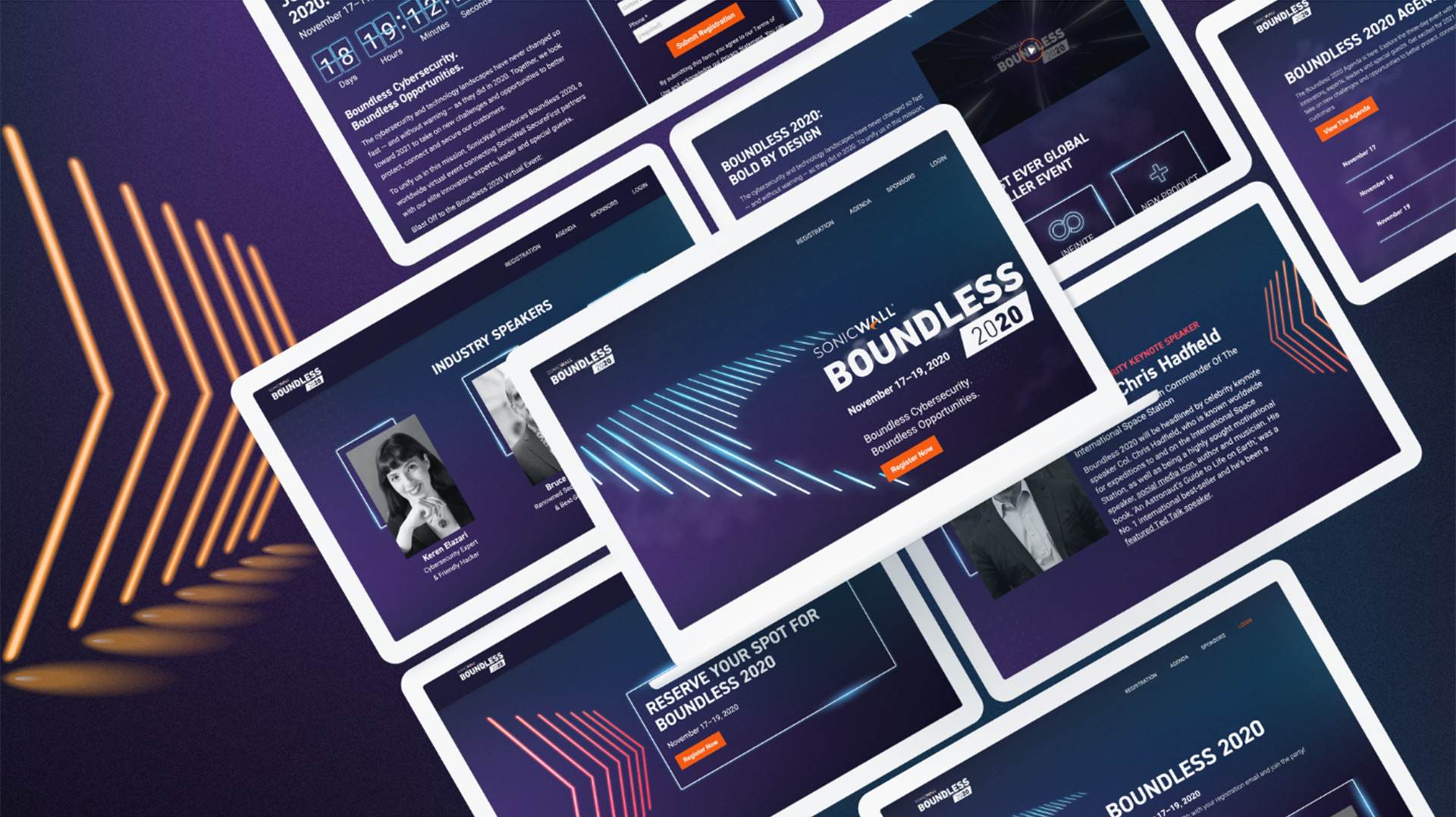 3. Augmented Reality
3. Augmented Reality